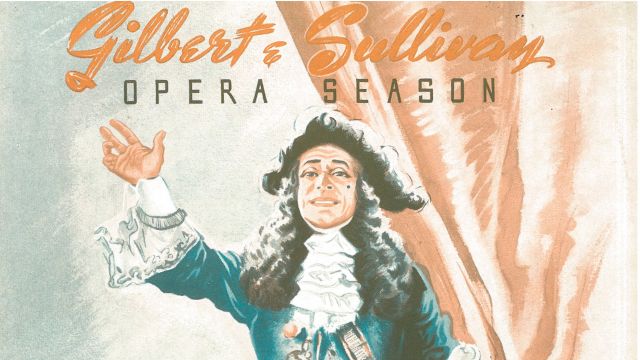Gilbert and Sullivan in Australia
Gilbert and Sullivan theatre programmes track the rise of J.C. Williamson’s business empire, and the ongoing popularity of the Savoy Operas here in Australia. Archivist Susan Mills explores some of the programmes held in the performing arts archives of the Seaborn, Broughton & Walford Foundation.
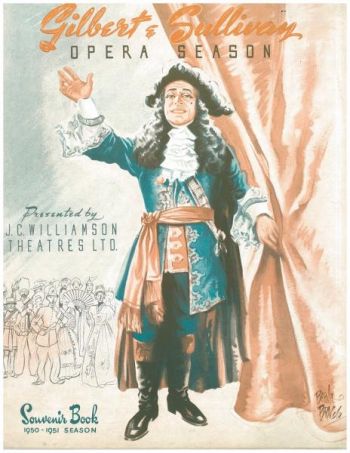 The history of our most successful theatre entrepreneur, J.C. Williamson (1844-1913), is also the history of Gilbert and Sullivan in Australia. When, in 1879, J.C. Williamson bought the rights to perform H.M.S. Pinafore in Australia, the latest musical by the new sensation Gilbert and Sullivan, it began a theatrical business empire.
The history of our most successful theatre entrepreneur, J.C. Williamson (1844-1913), is also the history of Gilbert and Sullivan in Australia. When, in 1879, J.C. Williamson bought the rights to perform H.M.S. Pinafore in Australia, the latest musical by the new sensation Gilbert and Sullivan, it began a theatrical business empire.
After an obscure start with the duo’s first collaboration Thespis in 1871, dramatist W.S. Gilbert and composer Arthur Sullivan produced hits with the one-act comic opera Trial by Jury, which opened at London’s Royalty Theatre in 1875, and The Sorcerer, which opened at London’s Opera Comique theatre in 1877.
H.M.S. Pinafore premiered at the same theatre in 1878 and was wildly popular, running for 571 performances. That success also spawned approximately 150 American pirate productions of HMS Pinafore, which paid no royalties. To confront this state of affairs, it was decided that The Pirates of Penzance would have its official premiere on Broadway. Prior to sailing for America, the company previewed the show at the Royal Bijou Theatre in Paignton, Devon, with the official premiere at the Fifth Avenue Theater, New York on 31 December, followed by the London premiere at the Opera Comique in April 1880 where it ran for an impressive 363 performances. Gilbert and Sullivan fever had well and truly taken hold.
The Americans, however, continued to perform Gilbert and Sullivan operettas copyright free for many years, despite the best efforts of the writers, and producer Richard D’Oyly Carte.
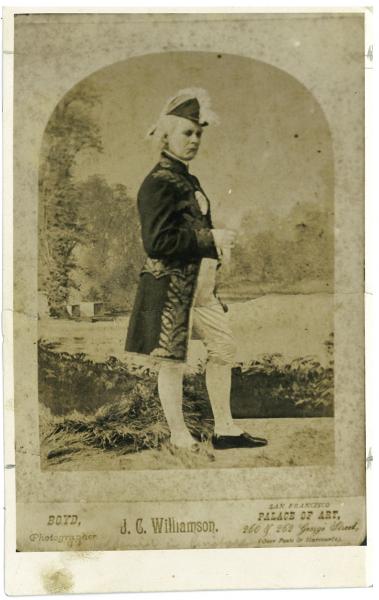
J.C. Williamson and wife Maggie Moore were a pair of enterprising American actor producers touring the world, including their first Australian tour in 1874. After quick-thinking Williamson experienced the original run of H.M.S. Pinafore in London, he purchased the rights for £300 to present the show in Australia. H.M.S. Pinafore opened on 15 November 1879 at Sydney’s Theatre Royal.
The programme proudly announced, “This being the FIRST AUTHORIZED REPRESENTATION, in Australia, every care has been taken to place it before the public with the MOST PARTICULAR ATTENTION TO DETAIL.” J.C. Williamson played the main role of Sir Joseph Porter, First Lord of the Admiralty, while Maggie Moore alternated between the roles of Josephine and Buttercup.
As in America, pirate productions, parodies and sequels had proliferated in Australia before JCW’s arrival. Soon to be Australia’s first great leading lady, Nellie Stewart played Ralph Rackstraw in one such production, while Australia’s first Little Buttercup was female impersonator ‘The Only Leon’. Williamson pursued the pirate productions, including sequels, through the courts.
In a side note, the cast of a subsequent, authorized, juvenile production of Pinafore in 1880, showcasing the students of Mrs G. B. W. Lewis, featured young Mary Weir (later the second Mrs J.C. Williamson) as Coxswain Bill Bunting.
By December 1880, J.C. Williamson had secured the rights from the D’Oyly Carte Comedy Opera Company for £1,000 to The Pirates of Penzance, which opened on 19 March 1881 at the Theatre Royal in Sydney. Again, J.C. Williamson and Maggie Moore played leads (JCW, the Sergeant of Police and Maggie, alternately, Mabel and Ruth).
J.C. Williamson stayed in Australia, forming the Royal Comic Opera Company in 1880, which in the 20th century spawned the Gilbert & Sullivan Opera Company branch of the all-encompassing J.C. Williamson company, until the last tour, ending in 1963.
A history in theatre programmes
J.C. Williamson programmes for Gilbert and Sullivan productions tell the story of the role of the J.C. Williamson company and Gilbert and Sullivan in Australian theatrical and social history.
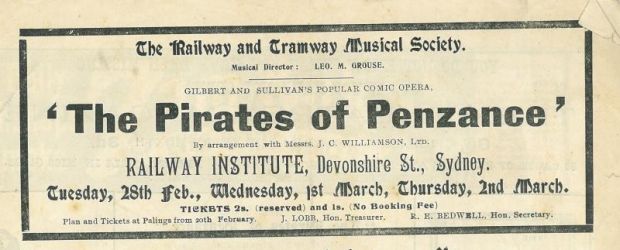
A programme for an amateur production of The Pirates of Penzance by the Railway and Tramway Musical Society in 1911, with permission from J.C. Williamson Ltd, performed at the large Railway Institute Hall in Devonshire Street, Sydney, is a small sign of the popularity of the comic operas. A society for the recreation and education of railway workers of Sydney, the performance was open to the public and the three-night run was welcomed by crowded audiences.
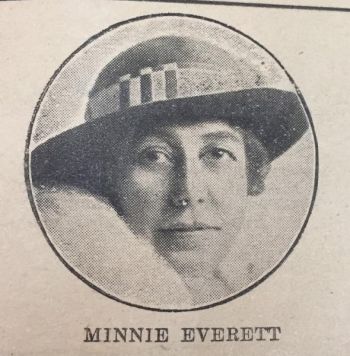
The H.M.S. Pinafore programme for the J.C. Williamson company’s 1921 Gilbert and Sullivan revival Australian tour reveals it was produced and choreographed by Minnie Everett – the world’s first female director of Gilbert and Sullivan.
The programme for the J.C. Williamson production of The Pirates of Penzance for the further revival season in 1926-27 underlies the public excitement for a Gilbert and Sullivan season that opened in Adelaide with The Gondoliers in April 1926.
In Sydney, the 1926-27 season, with shows limited to a two-week run, opened with The Gondoliers at the Theatre Royal on 27 December, 1926, followed by The Yeoman of the Guard in January 1927, Iolanthe, The Pirates of Penzance, The Mikado, Princess Ida, Patience and H.M.S. Pinafore with Trial by Jury. The programme for The Pirates of Penzance shows Broken Hill born Strella Wilson as the principal soprano. A student of Melba, Strella’s international credits included opera at Covent Garden, and creating the role of Princess Mirabelle in Noël Coward’s Cavalcade in the West End. Returning to Australia in 1934 to star in White Horse Inn for The Firm, she went on to become a popular radio performer, then a troop entertainer during WW2.
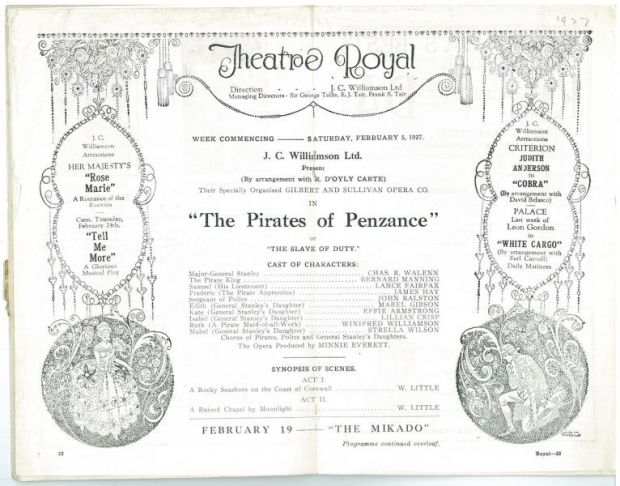
Another notable programme is for a fundraising matinee of The Pirates of Penzance produced by J.C. Williamson Ltd in 1940 for the Actors’ Benevolent Fund and the Sydney Day Nursery and Nursery Schools’ Association. The event was attended by children from the Association’s Woolloomooloo and Surry Hills nursery schools, who sang and provided percussion for ‘God Save The King’. Sweets and flowers were sold and a tapestry stool was raffled to raise funds for the nurseries.
The programmes of Gilbert and Sullivan in an archive collection tell a tale of the enterprising success of J.C. Williamson, and the perennial popularity of the works of Gilbert and Sullivan.

